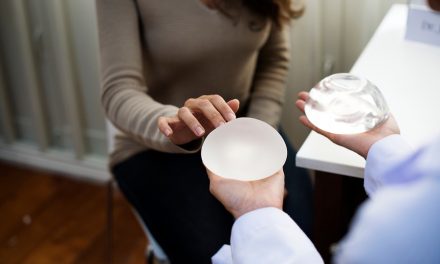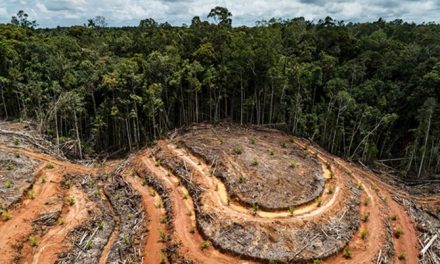On any given day, a squadron of airboats and helicopters spread out across Florida’s freshwaters to spray tank after tank of toxic herbicide.
Millions of gallons of poison pour into the state’s rivers and lakes. Officials say without it, Florida would be overcome with weeds. But a growing voice of fishermen, hunters, naturalists, and activists disagree.
They are confident that what began as practical navigation and flood control has turned into a million-dollar-a-month chemical addiction that is killing Florida’s natural state. They want it to stop. CNN reports:
To gather evidence, a home builder and angler named Mike Knepper has spent over a year chasing spray boats with a camera drone — a modern-day David taking aim at a giant.
When he captures a state contractor spraying weed killer on live birds or baby alligators, or illegally blowing herbicide across wetlands with the fan of an airboat, the videos become stones in his Facebook sling.
His Goliath is Florida’s Fish and Wildlife Conservation Commission, better known as the FWC, which bats away the criticism.1
RELATED STORY:
Knepper narrated a video last September which shows contractors on Lake Kissimmee hosing herbicide toward wildlife, including a snail kite, an endangered bird of prey. Kipp Frohlich, director at the FWC’s Division of Habitat and Species Conservation, responding on Facebook, writing:
“The FWC takes the mistreatment of wildlife seriously and our contractors are thoroughly trained and monitored.”1
Either by sloppy chance or cruel intent, some clips show the plume of weed killer following birds as they flee but, according to the FWC:
“The video in question does not show any inappropriate behavior. Wildlife was not targeted or harmed … the treatment will benefit native plants and animals.”1
But many videos went viral, which brought more scrutiny, controversy, and eventually a rare admission from the FWC that the herbicide program has gone too far. Eric Sutton, the FWC’s executive director during a public meeting in December, said:
“Despite what you hear on social media, we care about the health of the fish and the wildlife and the ecosystems. We also believe that we would like to see a future that doesn’t have to rely upon herbicides.”1
Sutton, while announcing an open call for new ideas, described a plan to keep a tighter eye on contractors by installing GPS-enabled sensors on spray nozzles to record the amount and location of every squirt of poison. He said:
“Because we’ve heard accusations that people are just dumping it. Well, we’re going to hold them accountable.”1
RELATED STORY:
The public outcry has now erupted into a statewide debate over a mounting environmental crisis, and how dependence on weedkillers could be a major piece of Florida’s toxic puzzle. Opponents argue that while the FWC focuses on the alleged misuse of herbicides, using the spray exactly as planned also does significant damage. According to CNN:
While fast-growing invasive plants outcompete some native species and threaten some waterways, the lush aquatic life serves as the liver and kidneys of Florida’s circulatory system. Plants like water hyacinth and water lettuce can clog navigation channels and tangle in propellers, but they are also natural filters that help clean all the pollution flowing out of farms, golf courses and neighborhoods.
Since 2013, hundreds of square miles of these wetland filters have been sprayed with dozens of different herbicides at a cost of over $100 million.
“All the water that comes out of this creek and out of that canal used to be filtered before it entered the lake by seven miles of submerged grass,” says pro fisherman Brandon Medlock as he motors his bass boat across Lake Okeechobee. “That grass is now gone.”
Beside him is retired pastor and fishing captain Scott Wilson who squeezes his eyes tight with emotion as he describes the changes. “When I saw Grassy Island on Lake Kissimmee disappear, I was in tears, sir. I was broken. It was one of the most phenomenal fisheries on this planet.”
They are among the critics who argue that by poisoning these plants and letting them sink to the bottom to rot, the FWC is only adding to the thick layer of fertilized muck that has been building in Florida’s wetlands for generations.1
RELATED STORY:
When hurricanes churn and spread that muck layer across the Gulf of Mexico, or when pollution-rich flood water is released into the sea, scientists believe it serves as a potent booster shot for naturally occurring toxic algae blooms, including the devastating red tide. Mike Parsons, a marine scientist and red tide specialist at Florida Gulf Coast University, explains that human activity does not start a red tide. He asks:
“Between our use of nutrients and the development of Florida, warming seas and climate change are we poking the bear?”1
Notwithstanding the fact red tides have been recorded in the Gulf for centuries, modern blooms are longer and more destructive thanks to all the man-made runoff coming out of Florida and down the Mississippi.
The website of Mote Marine Laboratory, an independent research group working with the FWC, states:
“We know human-contributed nutrients can affect a coastal red tide, and we must expand our data and monitoring efforts to confirm whether and how they did in each specific case.”1
RELATED STORY:
In 2017, a few months after Hurricane Irma blew across lakes like Kissimmee and Okeechobee, hundreds of tons of dead fish, sea turtles, dolphins and manatees began washing up on Florida beaches. CNN reports:
As the bloom lingered for 16 months, the state lost millions in tourism and real estate deals. Red tide kills fish and animals that wash up on beaches and can cause illness in humans too. People have been warned not to swim in water affected by a red tide, eat seafood from it, or breathe the air near it.
“I mean, the only possible way of fixing it is more Mother Nature, especially wetlands, cleaning the water,” said William Mitsch, a specialist in freshwater ecology at Florida Gulf Coast University. But as the population of Florida grows by an average of 38 people an hour, a prescription for more wilderness and less development is a heavy political lift.1
The staff of the FWC is made up of well-connected political appointees chosen by the governor. The seven-person commission consists of developers, financiers, the wife of a former commissioner, and the golf course designing son of Jack Nicklaus. There are biologists, but no scientists or conservationists.
Last August, Governor Ron DeSantis reactivated Florida’s Red Tide Task Force after 15 years of silence. He filled it with eleven scientists and specialists as the legislature promised nearly $5 million in funding. Whether they report a clear-cut link between toxic algae blooms and Florida’s spraying policies remains to be seen.
RELATED STORY:
In the meantime, thanks to public pressure generated by Knepper’s videos, there is a moment of reckoning. In December, FWC Commissioner Rodney Barreto asked for poison-free ideas, saying:
“We have a lot of stakeholders who are complaining that we are doing it wrong. OK, then tell us how to do it better, OK? If you had a million dollars, how would you do it?”1
Knepper argues that mechanical weed harvesters could handle navigation and flood control demands, but big lakes like Okeechobee, with few lakeside homeowners and water-skiers, could primarily grow wild with no harmful effects. He went on to say, while his voice filled with emotion:
“The first thing we have to do is just turn off the nozzles. That doesn’t cost anything!”1
“We can’t boot the 21 million people out of Florida. OK? We not going to stop growing sugar or mining for phosphorus fertilizer. But the one thing that we can do is stop spraying and killing the filter! So let’s just do that!”1
According to CNN, the FWC declined five requests for interviews or comments. They have also not stated what new ideas they received or when they might be tested. Sadly, for now, the airboats and helicopters keep spraying.












